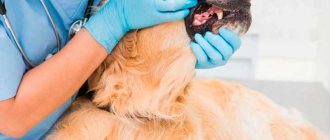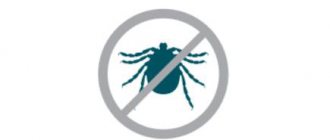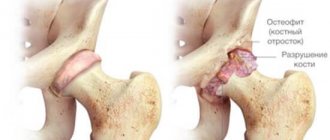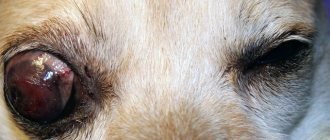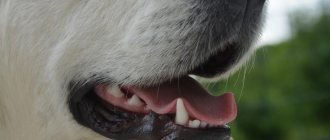What is rabies in animals
Rabies is a viral disease characterized by severe damage to the peripheral nervous system. Warm-blooded animals, including farm and domestic animals, most birds and humans are susceptible to infection. The virus is resistant to chemical disinfectants and low temperatures. It can persist in the corpses of dead individuals for several years. It dies instantly at a temperature of 100 degrees and within 10-15 minutes under the influence of ultraviolet radiation.
Infection with the rabies virus inevitably leads to death. There is no cure, so pet owners must take preventative measures. In the natural environment, carriers of the virus are wild carnivores: foxes, wolves, raccoons, jackals, hedgehogs, rodents, bats. Within the city limits, the infection is spread by stray cats and dogs. Cases of rabies infection are periodically recorded in all countries of the world.
How is it transmitted?
The disease is caused by an RNA virus belonging to the family Rhabdoviridae (rhabdoviruses). Once inside the body, the pathogen is localized in the lymph nodes and salivary glands. From there it spreads to other organs. Having penetrated the spinal cord and brain, the virus causes irreversible changes in the functioning of the central nervous system. The release of the pathogen into the external environment through saliva is the main cause of the spread of rabies.
Infection can occur:
- in direct contact with a sick animal at the time of the bite;
- when the saliva of an infected individual gets into open wounds, through salivation of the mucous membranes of the mouth and nose;
- aerogenic, that is, by airborne droplets;
- nutritionally, when the infection enters the body through the mouth with food or through licking objects;
- through vector-borne transmission, that is, through insect bites.
Although these multiple ways of spreading the virus are possible, the only current, repeatedly proven method of infection remains a direct bite. The likelihood of infection depends on the number and depth of wounds received, on the virulence of a particular pathogen and the individual susceptibility of the organism.
The risk group includes pets living near forested areas. An annual rabies vaccination is an effective method of prevention. Lasting immunity is established after the third vaccination. The chance of a vaccinated dog becoming infected is negligible. It is only 2%. Vaccinated animals with weakened immune systems, infected with some other infection, or weakened by surgery can become ill.
Routes of infection
The rabies virus is transmitted through the saliva of a sick animal, most often through a bite. In addition, you can become infected if the patient’s saliva gets on the surface of the skin, if there are wounds, or on mucous membranes.
A less common route of transmission is transmissible. This is the way in which the blood of a sick animal enters the body of a healthy one.
The most dangerous thing about this disease is that the virus is not species specific. This means that a dog can become infected not only from a dog, but also from any other infected animal: a fox, a hedgehog, a small mouse, etc. The same applies to humans.
Can a puppy have rabies?
Rabies develops faster in puppies than in adults. For some, the first symptoms appear on the fifth day after infection. The rapid spread of infection is associated with fragile immunity and small body size. The causative agent of rabies belongs to the encephalitic group of viruses. It spreads through neurons at a certain speed. The length of neural circuits in children is shorter, so the virus reaches the brain faster. For the same reason, the latent stage in small breeds is shorter than in large breeds.
Incubation period
The incubation or, in other words, latent period, when the disease does not manifest itself externally, ranges from one to three months, but there are cases where signs of the disease appeared six months or even a year after infection. This difference is associated with the stability of immunity, body size and characteristics of the organism of the infected individual. In an apparently healthy but already infected dog, the virus is detected in the saliva 5-10 days before clinical signs of the disease appear. At this point it becomes contagious.
Forms of manifestation
Depending on the symptoms and nature of the disease, there are several forms of the disease. Their features are listed in the table:
| Name | Violent | Quiet | Returnable | Abortive | Atypical |
| Duration | 5-12 days | 3-5 days | It occurs in waves, with an interval of several weeks between attacks. | Ends with recovery | Up to six months |
| Characteristics | The most famous and common form. Changes in behavior are pronounced. Apathy gives way to strong aggression, then paralysis sets in | There is practically no aggression. The condition is deteriorating rapidly | Repeated transition from apathy to aggression with breaks between attacks | A rare and little-studied form that ends in recovery. | There are no characteristic symptoms. The disease has signs of gastroenteritis: vomiting, diarrhea. Because of this, it is often not recognized. |
First signs
Regardless of the form of the disease, the first symptoms of rabies in dogs are usually subtle to owners and have nothing to do with the picture that most people imagine when they mention the disease. The pet becomes inactive, does not play, does not run during walks, lies down, and tries to hide from the light. The animal drinks a lot, while refusing to eat.
On the second or third day, saliva begins to flow, and breathing problems appear. Some dogs begin to eat dirt, stones, sticks and other inedible objects. You may experience problems swallowing water and food, and your pet often chokes. This is the silent stage of the disease. It is the same for all forms of rabies, except atypical. The further course of the disease is different. The atypical form has vague symptoms, similar to food poisoning, so the infection often remains unidentified.
How long does a sick dog live?
A dog suffering from a violent form of rabies dies within 5–7 days, but can live up to 14 days. These days pass in terrible torment for the animal, accompanied by convulsive seizures and gradual failure of internal organs.
With an atypical form, the animal can live up to two months,
while remaining a source of infection. The recurrent form allows the animal to live for up to 6 months, but death is inevitable in any case.
Reference.
The shortest form is depressive - the animal dies within a week.
Symptoms
Veterinarians distinguish several forms of the disease. The symptoms and behavior of a rabid dog differ for different types of disease. The most common is the violent form of infection. Its symptoms make up the generally known picture of the disease. There are 5 forms of rabies:
- violent;
- quiet;
- returnable;
- abortifacient;
- atypical.
Violent form of the disease
Symptoms in violent form last from 5 to 12 days. The disease occurs in three stages:
- prodromal;
- manic;
- paralytic.
The first stage of the disease lasts about three days. The manifestation of rabies in dogs in the prodromal stage may go unnoticed, but during this period the maximum amount of virus is released into the environment. You should pay attention to any changes in your pet's behavior. The dog hides in secluded places, avoids light. An obedient pet stops responding to commands. Sometimes, on the contrary, the dog demands increased attention, caresses, licks his hands.
Animals lick, scratch the bite site with their claws, and wounds and scratches appear on the body. As the disease progresses, anxiety increases. Symptoms become severe. Paralysis of the laryngeal muscles gradually develops, which leads to difficulty swallowing movements and excessive drooling. The dog is short of air. She yawns and makes grasping movements with her mouth.
Then the disease goes into the stage of excitement or, in other words, manic, which lasts 3-4 days. Animals stop recognizing their owners and show causeless aggression. The reactions are inadequate, the rabid animal eats the earth, garbage, and attacks inanimate objects. The grasping movements are characterized by extraordinary force, which sometimes leads to jaw fractures. Attacks of excitement are followed by periods of apathy.
The pet loses its appetite and loses weight. Hydrophobia is observed, explained by the inability to swallow liquid due to spasms of the swallowing muscles. There is a slight increase in temperature. The dog's mouth is constantly open, and the saliva that comes out foams heavily. Due to paralysis of the tongue and muscles of the larynx, the timbre of the voice changes and becomes hoarse. The pupils are dilated, do not react to light, sometimes squint and loss of orientation in space develop.
The paralytic stage lasts from one to six days. At this point, disturbances in the functioning of the central nervous system are already clearly visible. Paralysis of the hind limbs, tail, and internal organs occurs, which leads to spontaneous urination and defecation. The sound of pouring water causes panic. The temperature rises by 1-2 degrees. The number of leukocytes in the blood drops. An exhausted pet stops responding to stimuli, falls into a coma and dies.
Quiet
The depressive or silent form of the disease is characterized by rapidity: the animal dies on the third or fifth day. Sick dogs are characterized by apathy, excessive affection, sometimes replaced by an increase in anxiety. There is no aggression. The pupils are dilated. Rapidly developing paralysis of the tongue and pharynx leads to difficulty swallowing and excessive drooling. Unsteadiness of gait is observed. The condition deteriorates rapidly, and the dog suffers from coughing attacks. Sometimes seizures occur. Death occurs from failure of internal organs.
Returnable
The disease in its recurrent form is characterized by a wave-like course. At first, all manifestations of the infection disappear. The disease recedes, but after a while an exacerbation occurs and the symptoms return. Sick animals are characterized by inactivity, which is replaced by aggression, increased salivation, and perversion of appetite. The transition from the quiet stage to the violent stage is repeated many times. Although several weeks may pass between attacks, the animal is doomed. Each time the symptoms get worse. Death is inevitable.
Abortive
A little-studied and rare form of infection is called abortive, that is, interrupted. Until the second stage, it proceeds typically, and then the dog, which has all the signs of rabies, recovers. Why this happens remains a mystery to veterinarians. It is believed that the abortive form occurs in only 1-2% of infected people. There is an opinion that if rabid animals were not euthanized in the initial stages, this percentage would be higher.
Atypical
The atypical form is characterized by a gradual deterioration of the condition and a long course of the disease: from three months to six months. There is no aggression. Distinctive features are disturbances in the digestive system: lack of appetite, vomiting, bloody diarrhea, leading to exhaustion and death. It happens that due to the uncharacteristic course, owners do not recognize the disease as canine rabies, and an animal infected with a deadly virus can infect unsuspecting owners.
Types of disease
Rabies in dogs can be silent, violent, abortive, atypical and recurrent, it all depends on the strength of the virus infecting the body and on the form of the disease.
Rampage
This type of disease is considered to be the active stage of virus development. This period is divided into three substages. The first substage is characterized by the animal’s solitude and lack of reaction to its name. But if you approach him, he will whine and ask to be petted.
The second substage is characterized by manifestations of aggression, fearfulness, severe irritability, attacks on animals, owners and objects.
The third substage manifests itself in blockage of the larynx. The dog begins to wheeze, its lower jaw drops and saliva flows profusely. The animal constantly howls and whines. At the last substage, paralysis, oppression and death occur. Furious rabies lasts from five to thirteen days.
Quiet fury
This form of the disease is often confused with Aujeszky's disease or pseudorabies. It also leads to damage to the respiratory tract. With this disease, the dog begins to itch and becomes irritable. However, there are much fewer destructive processes in brain tissue than with rabies. But both diseases are fatal. A person is practically not susceptible to this disease. Rabies is equally dangerous for both people and animals.
At one stage of this type of rabies, the pet stops eating, becomes weaker and loses weight. The silent form lasts from two to four days. At the initial stage, the dog does not change behavior and eats normally. As viral activity increases, the animal begins to experience abdominal pain, vomiting and diarrhea. This leads to rabies being confused with intestinal infection and enteritis.
In addition to weight loss and weakness, the dog may experience laryngeal paralysis. At first glance, this condition is similar to when an animal is choking on bones. The owners begin to look into the animal's mouth for a foreign body, and not finding it, they become infected through saliva.
Atypical rabies
This type of disease is classified as a separate subtype of rabies. According to official data, atypical rabies is synonymous with the silent type of the disease. It is called atypical because of its vague symptoms. While everyone can identify the violent type of rabies, even veterinarians often cannot recognize the atypical type.
It is confused with Aujeszky's disease, gastrointestinal disorders and nervous plague. The atypical form of rabies is also characterized by paralysis and epileptic seizures. But unlike nervous plague, in its course there is no conjunctivitis and there is no blockage of the lower jaw, while in rabies it is blocked due to paralysis of the larynx.
Recurrent rabies
This type of rabies is characterized by cyclical, wave-like development. The stages will change from quiet to violent. This transition is repeated many times. The apathetic state becomes stronger each time, and aggression continues to increase. In veterinary medicine, the relapsing form is called remitting.
Often the cycles of the disease are confused with the development of an acute stage, which will be replaced by complete recovery. However, the animal will not be able to recover, as it is doomed. Out of a hundred dogs with such a disease, only one individual can survive, and this is extremely rare. This type of disease is classified as abortive.
Abortive rabies
Before the onset of the acute stage, the disease has typical symptoms. The animal then experiences a dramatic recovery, the mechanism of which is a mystery to veterinarians. Abortive or aborted rabies occurs in 1% of dogs. However, the statistics could have been more positive if rabid pets had not been euthanized.
This form of rabies is also found in humans. Once a similar case was reported in Texas. A homeless woman came to the hospital with symptoms consistent with rabies. The tests taken from her confirmed the presence of infection. After the disease entered the acute stage, the patient did not die, but recovered sharply.
The existence of this type of disease gives hope for the dog’s survival, but should not become an incentive for the owner to inaction, since one should not forget that the rabies virus is particularly dangerous. It is important to promptly determine the type of illness and make a decision on what to do next with the sick animal.
Testing for rabies in dogs
If an external examination reveals a bite mark and no rabies vaccination has been carried out, the pet must be tested to detect the deadly virus. When clinical signs of the disease have already appeared, laboratory diagnostics will help to exclude other infectious diseases with similar symptoms: Aujeszky's disease, encephalomyelitis, plague.
The deadly virus spreads along neural circuits and is rarely detected in the blood, so if infection is suspected, it is more advisable to examine the cerebrospinal fluid. For 10 days, while the results are being processed, the animal must be isolated, quarantined in a single cage, and taken out for walks strictly on a leash, avoiding contact with other dogs. If the infection is confirmed, unfortunately, the animal is euthanized.
To determine a dog's immunity after vaccination, there is a test for the presence of specific anti-rabies antibodies in the blood. The analysis is carried out only by accredited laboratories, which are available in some veterinary clinics. The cost of the procedure is high, but this test is necessary when exporting a dog abroad. Many countries prohibit the import into their territory of animals that do not have the results of such an analysis.
- Barley in a slow cooker: porridge recipes with photos
- How to get a permanent - static IP address of a computer
- How to glue vinyl wallpaper on paper
It makes sense to do an expensive test a month after a rabies vaccination, when immunization is formed, and no later than 30 days before repeated vaccination. The results will be ready in 10-20 days. If the amount of anti-rabies antibodies is less than required, the animal is revaccinated and brought in for re-analysis a month later.
Treatment, diagnosis
There are no particular difficulties when making a diagnosis of rabies. A comprehensive examination of animals, a series of laboratory and biological studies, and tests on laboratory animals are carried out. The dog's cerebrospinal fluid is taken for analysis. When making a diagnosis, the epizootological situation and anamnesis data are taken into account.
The fastest method for diagnosing rabies is ELISA (enzyme-linked immunosorbent assay). Differential diagnosis is mandatory, since the symptoms of this infection are similar to Aujeszky’s disease, the nervous form of canine distemper, and meningoencephalitis.
Important! If your pet has had contact with wild animals or stray relatives, we recommend taking the dog to a veterinary hospital.
The animal will be quarantined in a separate box. He will be constantly monitored by veterinarians for two weeks. During this period, no one is allowed near the animal, including the owners. If the diagnosis is confirmed, the dog is euthanized.
Unfortunately, rabies is an incurable disease of a viral infectious nature. There is no curative treatment, so owners must do everything possible to protect their faithful friend from infection with the rabies virus.
Is rabies curable?
There is currently no treatment. A pet that shows signs of illness is doomed. The virus multiplies quickly and, moving along neural circuits, reaches the brain and causes inflammation in it, leading to paralysis and death of the animal. In order not to torment an infected animal and to prevent infection of other pets and humans, the most humane method is painless euthanasia with veterinary drugs.
The first mentions in history of infection with the rabies virus were found in chronicles of the sixteenth century. Since then, doctors and scientists have been trying to find a cure for it. In the twenty-first century, they tried to treat rabies with a coma, into which the patient was artificially injected. The first and only successful experience of such treatment was recorded by American doctors in 2005.
The meaning of this technique is as follows: when most of the nervous system is turned off, the body has time to produce the required amount of antibodies. When the treatment was repeated, success was achieved in only 1 out of 24 cases. Perhaps the patients had an abortive form of the disease, and recovery is not related to the activities of doctors. The method has not been tested on animals. There is only a working vaccine.
Prevention
The creator of the rabies vaccine is French microbiologist Louis Pasteur. In 1880, a scientist, struck by the agony of a child dying from a deadly virus, began long-term experiments to create vaccination material. He experimented with rabbits, isolating the virus from their brains and subjecting it to special treatment. For the first time, the resulting vaccine was tested on dogs. 50 individuals were vaccinated. The same number of animals were left for control.
All dogs were injected with the rabies agent at the same time. The results were amazing: none of the vaccinated animals got sick. The vaccine was tested on humans in 1885. A nine-year-old boy was bitten by a rabid dog. Doctors unanimously declared that the child was doomed. Then Louis administered his vaccine. The boy did not get sick, which brought Pasteur world fame.
Rabies vaccines produced domestically and abroad are successfully used to prevent the spread of a dangerous virus. The doctor selects the drug and vaccination schedule. Vaccinate healthy animals. Pregnant and lactating females, weakened individuals are not subject to vaccination. Before vaccination, the dog is given anthelmintic drugs.
Rabies vaccination is carried out in several stages:
- The first vaccination is given to puppies at two months of age;
- the second – after 3 weeks;
- The third dose of the drug is administered to puppies after the change of milk teeth.
After this, the dog acquires strong immunity. Revaccination is carried out annually at the same time. After administering the vaccine, the doctor makes a note about the vaccination in the veterinary passport. Without this document, animals are not allowed to participate in exhibitions, competitions, or transportation on planes and trains. Owners are strictly prohibited from taking unvaccinated pets out hunting. State veterinary clinics provide vaccinations free of charge.
When an unvaccinated dog is bitten, the drug is administered urgently. The disease can be prevented if, for several months after urgent vaccination, the animal is prevented from hypothermia or overheating, excessive fatigue and nervous tension. These risk factors reduce the effectiveness of the vaccine. All items that come into contact with sick animals, bedding, toys, and bowls should be burned.
Vaccinations
Rules for rabies vaccination of dogs in Russia
There is a vaccination schedule for dogs, which indicates the recommended age of the animal.
Sometimes the vaccination date is postponed on the recommendation of a veterinarian for some reasons, for example, cropping of ears, weakened immunity, or change of teeth in a puppy.
Complex vaccine
There are mono-vaccines that protect against one disease, and poly-vaccines - complex preparations that form immunity against several diseases at once.
Polyvaccines are most often used for adult dogs to support already developed immunity.
Where to do it?
Vaccination of animals is carried out in any veterinary clinic.
If there are no contraindications at the moment, vaccination is carried out on the same day according to the instructions for the drug.
Free vaccination
On the territory of Russia, vaccination is free and mandatory for all dogs in regions affected by the epizootic situation of rabies.
Vaccination is carried out in state veterinary clinics and vaccination centers.
How to prepare your dog for vaccination?
Only healthy animals are vaccinated. A week or two before the expected date of vaccination, deworming is carried out - treatment for possible helminthic infestations.
Animals infected with worms are not allowed to receive vaccination.
When to do it?
According to the vaccination schedule for dogs, the first vaccination is carried out in puppies at the age of three months - preferably before the first change of teeth.
Sometimes, for health reasons or on the recommendation of a veterinarian, vaccination is postponed for up to six months.
If vaccination is carried out before three months of age, re-vaccination is carried out after two to three weeks for a more stable formation of immunity
. For older puppies, one vaccine is enough.
How long does it last?
On average, a dog's immunity lasts for a year.
Expensive drugs can provide longer-lasting immunity. It weakens over time, so annual booster vaccination is recommended.
How often to repeat?
Revaccination is carried out every year, at approximately the same time, coinciding with the first vaccination by month.
Sometimes, depending on the drug used, revaccination is carried out every two to three years.
Contraindications
On the day of vaccination, the veterinarian must examine the animal for contraindications. If the dog has an elevated body temperature, helminthic infestations, or the dog looks sick or exhausted, vaccination is postponed.
Contraindications include recent injuries and weakened immunity.
How to do it yourself?
You can vaccinate a dog yourself, but in this case you will not be able to enter information about the procedure into the veterinary passport.
It is recommended to carry out this procedure in a veterinary clinic. The doctor can choose the right drug and the required dose.
Where is the injection given?
Most anti-rabies injections are given intramuscularly in the thigh area.
It is possible for some drugs to be administered subcutaneously into the withers area. Information on the rules for administering the drug is in the instructions for use.
Vaccination for an adult dog
If the dog was not vaccinated as a puppy, vaccinating it is not only acceptable, but also desirable.
Adult animals tolerate the first vaccination a little more difficult. However, it is easier to endure minor side effects from vaccination than to euthanize a sick animal.
Puppy
Puppies tolerate vaccination quite easily, side effects depend on the type of vaccine
and individual characteristics of the animal. The first vaccination is recommended for puppies.
Old dog
The vaccine is administered to healthy animals of any age. For some reasons, the veterinarian may refuse to vaccinate, citing the dog’s age and the state of the immune system.
In some cases, older dogs should not be injured by the introduction of an anti-rabies vaccine.
Can a vaccinated dog get sick?
Cases of disease in properly vaccinated dogs are extremely rare.
Vaccinated dogs develop powerful immunity against the rabies virus. The percentage of sick vaccinated dogs averages 4–5%.
What if a vaccinated dog bites?
If a person or animal is bitten by a dog that is known to be vaccinated against rabies, administration of rabies immunoglobulin is not necessary.
It is enough to treat the wound with disinfectants to prevent the addition of a secondary infection.
What to do if a dog is bitten
If your pet has become a victim of stray dogs, the main thing is not to panic. Remember that all manipulations should be carried out using protective equipment: rubber gloves and a mask. Saliva from animals with rabies, if it gets from a pet's wound onto damaged areas of human skin or mucous membranes, can cause infection to the owner. To help your pet, you need to do the following:
- When you bring your dog home, put a muzzle on it, and put on a protective mask and rubber gloves.
- Trim the hair around the wound.
- Wash the bite area generously with soapy water. It is advisable to use laundry soap and a syringe to create a strong jet pressure.
- Take the animal to the veterinarian. The doctor will prescribe immunostimulants that enhance the effects of the vaccine.
- If the pet has not been vaccinated, it is necessary to urgently administer an anti-rabies drug and place the animal in quarantine. After 2 weeks, revaccination is carried out.
- In any case, the dog must be closely monitored for at least two weeks.
First aid
If your dog is bitten by another animal, it immediately falls into the risk zone. What to do?
- First, calm down and treat the wound.
- If your pet has been bitten by another pet, you should ask the owner whether his pet is vaccinated.
- If possible, you should immediately isolate the animal that bit your pet and monitor it for 10 days. If after this time the animal has not shown signs of rabies, your pet is safe.
- If it is not possible to verify the health of the animal that bit your dog, then you should immediately contact a veterinary clinic.
If your dog is vaccinated, it will be monitored for 10 to 14 days. It is very bad if she is not vaccinated. In this case, she will be vaccinated at the clinic, which must be repeated after two weeks. The pet must also be quarantined for 10-14 days. If no signs of rabies are found during this time, the dog will be released home, but it will still be under control.
Remember, if your pet is not vaccinated and is bitten by a rabid animal, vaccination after the bite will most likely no longer help. And since the incubation period of the disease lasts several years, you will not soon be able to be 100% sure that your dog is healthy.
What to do if bitten by a rabid dog
For humans, rabies is a fatal disease. An infected person will remain alive only if he completes a course of preventive vaccinations in time before the first symptoms of the disease appear. Infection occurs through saliva. The disease can develop at lightning speed if wounds on the face and neck become entry points for the virus. Bites on the hands pose a great danger, since many nerve endings are concentrated there. The entry of the virus into the body through wounds on the legs corresponds to a long incubation period.
If you are bitten by an unfamiliar dog, as well as a hedgehog, mouse, fox or other wild animal, you need to take the following actions:
- Wash the wound with laundry soap.
- Treat the bite site with hydrogen peroxide and bandage it.
- Go to the nearest emergency room to prescribe a course of rabies vaccine.
Remember that there is no need to visit the clinic at your place of registration. Any trauma department is obliged to provide assistance to a person bitten by animals, even in the absence of a passport and medical insurance policy. Emergency rooms are open 24 hours a day. Previously, if infection with the rabies virus was suspected, the patient was prescribed 30-40 injections into the abdominal muscles. Now up to 7 doses of the vaccine are used, which are injected into the shoulder area.
